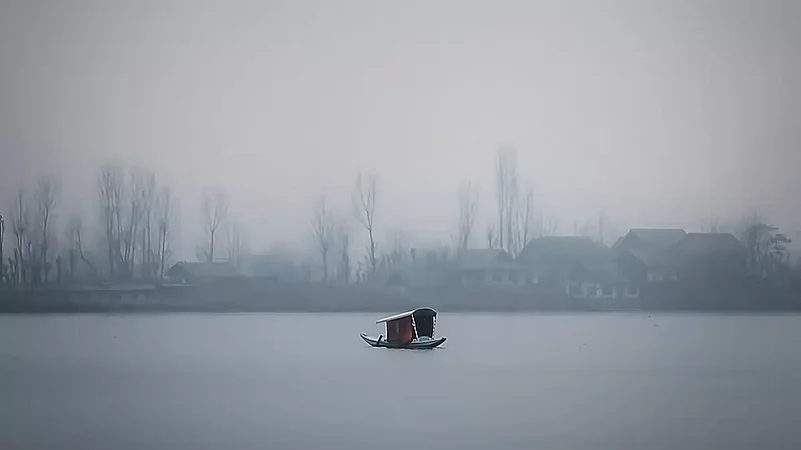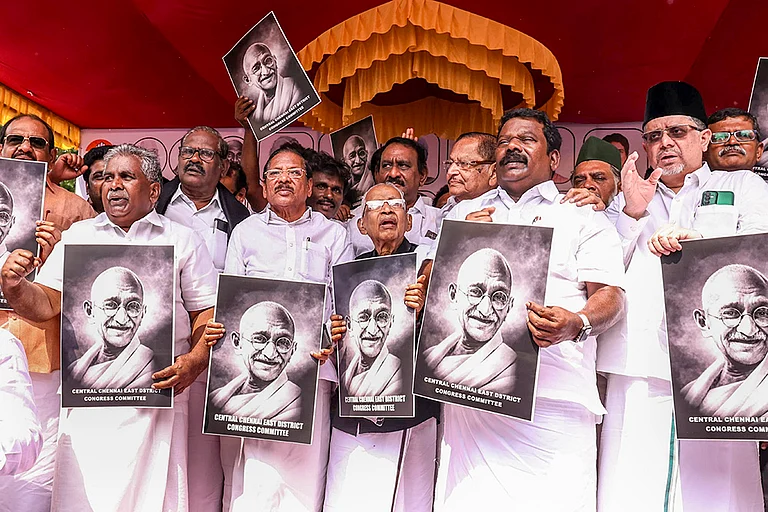During my childhood, the winter was so long that now I have lost the memory of summer. A friend of mine asked me once: “How do you remember the summer when you were growing up in a place like Kashmir, in the 90’s?” I couldn’t reply at first but then realised that I don’t remember a single day of the summers of the 1990s in Kashmir.
Losing someone at an early age affects your childhood in a grievous way so much so that you end up relating to winter only and the heat of summer disgusts you. I would wake up in the middle of the night to the cries and wailing of my young mother who had become a widow. Losing a partner in a place like Kashmir can be cruel, especially when you’re a housewife and have no other source of income except for the monthly charity by your own brother. This bought her hate from her brother’s wife and yearly gifts of two pieces of cloth for every Eid from her in-laws. To grow up around this meant a challenge for us, too.
I remember during the illness of my father who was suffering from Amyotrophic Lateral Sclerosis (ALS), our gardener was once told not to come that summer and mow our lawn. That summer was the beginning of the winter for me; roses grew wild and so did creepers. I could see the greens outside my window and they seemed light years away from me. In the late 90s, after my father passed away, it was winter, I sat on a boulder while they dug up his grave. It was then that I noticed clouds and made sense of how shapes and symbols form. After all, the universe leaves us signs and only those who know how to read them understand.
Winters in Kashmir those days were absolutely dark and cold; just like you see in movies and read in books. The conflict kept growing with every winter and my sister and I grew in them and in the conflict. My grandfather would read us stories at bedtime. Before we were told the stories, I would make my grandparents beds on the floor, in haste and perfection as taught to me by my father before he was gone.
My grandfather was a fluent Farsi (Persian) speaker and reader; my sister would sit beside him and I would rush to his almirah to grab the Farsi story book. An old man with a white beard, whose face was a silhouette against the burning yellow candle, his breath vapour in that enduring winter, would read to us. The two young children who sat there beside that old man, the warmth of the kangri (coal heater) in their hands, dreams in their eyes, suffered irreparable loss. The story was of two tradesmen who went on an adventure along the Silk Route.
I found this story in almost every household. Everywhere I looked, it seemed winter had left its mark. Every person’s eyes have winter in them; the loneliness of our houses and gardens and all the valleys keep reminding you of winter. The melancholia of it: like the way that shikara guys row his boat in the Dal Lake while it snows. He still has a home to find, he who sits in the middle of nothing and constitutes something so beautiful, unknowingly creating an impressive scene for the theatre of minimalism. Winter is about minimalism and loneliness; be it the lonely chinar around millions of saffron flowers or the widowed mother of two against conventional society.
This ordeal of winter in Kashmir made me fall in love with it and understand art through this. As an artist, I cannot create an image which has warm greens, breath-taking golden sunsets and happy-faced portraits. I have understood the colour blue and the blues around it. Blue for me reflects the longing for summer; and summer had left Kashmir in the 90s and never returned.
Morpheus wrote to me once after visiting Kashmir: “The chinars rose against the skies and the waters of Dal had turned bluish. A lone shikara tried to find its way home. The waters rise and fall. They reflect things. Sometimes, they reflect the sun, and sometimes the solitude of the moon.”
The longing for summer which would never come, the unreasoning of this silence amongst people. The streets around the Jhelum, the emptiness of homes, the voice recordings of your loved ones now dead, the once-bright colours of frames that have faded, dulled by the passage of time and the fading of the sun. The same thing happened to the summer in Kashmir, it grew faded by the blues of memories of those who left and never returned and those who got lost in the fog or disappeared.
There’s a star outside my window and there’s the sound of a stream flowing underneath it. I will only talk about this star, lonely as we all are. In the month of warmth and greens, the star was born. Lest all it would ever feel was the cold of the winter; it liked blues. The blues of a haze and the blues of dwindling clouds, the hidden blues of ice and snowflakes. Once it trotted its way to an unknown place where there were prisoners and the bones of a human carcass. The star tried to hide behind the moon and hoped it never saw this ever again in its life. It swayed back to its original position and placed itself on top of a pine tree under the shimmering lights of a city. A city that healed but had broken hearts within.
Morpheus introduced me to the world of Edgar Allen Poe and once I wrote a poem to him describing how my raven was:
One night
We spoke and it was silent
There was breeze and there was rain
A knock on my window
It was raven the “winter”
I wrote shapes and symbols
They smelled cigarettes and ink
She asked me to write a letter
I wrote nothing
I stubbed my smoke on the paper
and that was her letter.
The white and the grey.
and I loved you more.
The whites and the greys about you.
Every step I took
I remembered
We spoke of bruises and sadness
We smiled at hope and sun
The moon was a companion
For all the nights when we weren’t together
Another knock
And it was winter again
The raven who sang songs for us
Despair and remembrance
It’s a new day
But my fingers smell the same
The ink and the cigarettes
Now I have crossed this place many times; the lone tree always left a subduing emotion in my heart. As a photographer, you create an image in your mind before taking the shot and whenever I saw this, I could feel the warmth of this place. People around it working in fields and people around it when saffron bloomed. The tree, a person itself, gives refuge to people under its shadow; for them to have a hard-earned cup of tea with a majestic view around. I saw myself as the tree. It was me in the fields, standing tall in every weather that nature offered. It is resilience to fight winter when everything in the field is frozen; even the tiny shrubs are frozen. There is no life and there is nobody to watch him. But regardless of everything, it stood tall, a perfect image to correlate with your melancholy and loneliness.
For now, I am winter and the story for the longing of the summer shall continue.
(This appeared in the print edition as "Longing for the Summer")
(Views expressed are personal)
Omar Bazaz is a photographer and filmmaker based in Kashmir





















